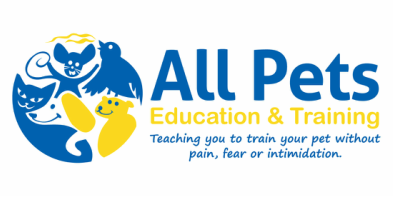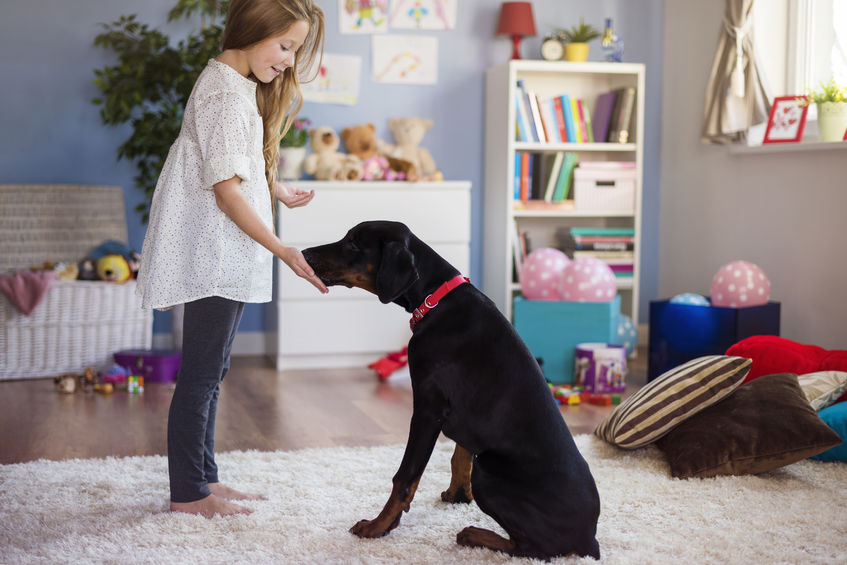Deference Training
The Karen Overall Protocol
This protocol was originally developed by Dr Karen Overall – behaviour veterinarian.
This protocol can not only prevent problems from a lack of guidance, but also is a key part to treating all behaviour problems successfully.
This protocol as for any animal training must be carried out without the need for violence or physical punishments or abuse.
This protocol will not “break” your dog, and take away their personality or spunk. It will simply give you an increased level of understanding within your relationship.
What are the basics, and why do this?
The protocol allows dogs to do the following:
What does DEFERENCE mean? Respectful or Courteous – honestly isn’t that what we would like all our interactions with any species to be?
What are they required to do?
Well really all we are asking that they SIT whenever they require or need something. This is very similar to the NILIF (Nothing in Life is Free) program.
So in essence we are simply asking the dog to SIT whilst being quiet, calm and relaxed, and importantly looking to their human so that they can interpret any information the human shares with them.
Why is this important?
Dogs have social systems that are based on deference (not dominance) to others. Fights for status are rare in wild dogs, so please do not feel the need to argue with your dog and show him who is boss.
So in fact, wild dogs use a social system similar to us. An example of deference in our human society – children defer to parents, however, can then also be the individual amongst their school group that other students will defer to.
How the Deference protocol works.
Steps for Deference
1. Communicate clearly with your learner
2. Do not use punishment
3. Ignore undesirable behaviours
The use of deferential behaviours to prevent problems.
When could this be useful to manage undesirable behaviours or better yet – prevent them?
The dog must sit and be quiet and LOOK to you in order to have access to anything that he wants. This needs to be for the rest of their life.
So what will this include?
If your dog has difficulty in sitting ie hip dysplasia or arthritis we can adapt our criteria to a position of calmness and ceased motion that they find comfortable.
What do you need to do?
Follow this protocol consistently – all members of the family/household need to be on the same page.
SIT – say the dog’s name, and request he SIT – allow 3-5 seconds before repeating the cue. If your dog refuses or resists, you simply need to walk away from the dog. When the dog follows you, and asks for your attention, ask for a SIT. Eventually the dog will offer the sit.
As soon as the dog offers the sit, reward him with praise, and a small reward (frequently in the beginning – reduced and used less predictably as the dog improves – be selective and pick the better behaviours).
STAY – The dog must stay until released. Ask for handout on teaching STAY if your dog does not already know this cue.
LOOK – Having a dog that is comfortable with making eye contact with his human without feeling threatened is especially important.
If your dog does not already know how to make eye contact with you, please ask for the handout. Next we teach the dog to breathe.
RELAXATION – teaching your dog to take a deep breath. Just like in humans, taking a deep breath helps promote calmness.
We want this deep breath to also be associated with looking at us.
Just like in humans, the heart rate, respiratory rate and alertness are all linked, and if we can teach an animal to slow their respiration, their heartrate will decrease, and arousal and attentive to surroundings to also decreases.
Ask your dog to LOOK, when they do, quickly move the reward from your eye level, to a few cm from the dog’s nose (without giving the reward). Say your cue word “breathe”.
You should notice the dog’s nostrils will flare as he has a sniff of it – mark the behaviour and immediately deliver the reward.
Gradually increase your criteria to only rewarding when the nostrils are larger, and then move toward, only larger, round and open.
As your dog responds to the breathe request, start to delay your reward a second or two at a time.
The aim is to have a dog that is able to hold his breath, and therefore slow his heart and respiratory rates. Doing this will result in a dog that is more focused and relaxed.
Things to Remember
PDF handout below for downloading.
References
Overall, K. (1997). Clinical small animal behavior. 1st ed. St. Louis: Mosby.
Overall, K. (2013). Manual of clinical behavioral medicine for dogs and cats. 1st ed. St Louis: Elsevier.
This protocol can not only prevent problems from a lack of guidance, but also is a key part to treating all behaviour problems successfully.
This protocol as for any animal training must be carried out without the need for violence or physical punishments or abuse.
This protocol will not “break” your dog, and take away their personality or spunk. It will simply give you an increased level of understanding within your relationship.
What are the basics, and why do this?
The protocol allows dogs to do the following:
- Learn the beginning of how to be calm
- Learn to ask their human for help
- Learn that they can expect help from their human about what is expected.
What does DEFERENCE mean? Respectful or Courteous – honestly isn’t that what we would like all our interactions with any species to be?
What are they required to do?
Well really all we are asking that they SIT whenever they require or need something. This is very similar to the NILIF (Nothing in Life is Free) program.
So in essence we are simply asking the dog to SIT whilst being quiet, calm and relaxed, and importantly looking to their human so that they can interpret any information the human shares with them.
Why is this important?
Dogs have social systems that are based on deference (not dominance) to others. Fights for status are rare in wild dogs, so please do not feel the need to argue with your dog and show him who is boss.
So in fact, wild dogs use a social system similar to us. An example of deference in our human society – children defer to parents, however, can then also be the individual amongst their school group that other students will defer to.
How the Deference protocol works.
- The dog asks for human help by looking at the human quietly
- The dog must be relaxed
- You must provide clear communication and be both reliable and humane.
Steps for Deference
1. Communicate clearly with your learner
2. Do not use punishment
3. Ignore undesirable behaviours
The use of deferential behaviours to prevent problems.
When could this be useful to manage undesirable behaviours or better yet – prevent them?
- Sitting and deferring to you to everything reinforces the innate social structure of the dog, and will teach him to look to you for guidance and help.
- Acts as a mini “time-out” which allows the dog to respond to the human’s request, and calm down.
- A calm sitting dog is less reactive than a dog that is running around.
- When consistently implemented and REINFORCED the dog will learn to anticipate what is expected.
The dog must sit and be quiet and LOOK to you in order to have access to anything that he wants. This needs to be for the rest of their life.
So what will this include?
- Food
- Rewards
- Love/Attention
- Door Manners (outside/inside)
- Leash, collar and harness manners
- Comfy areas such as your bed or lounge (by invitation)
- Playing (games or toys)
- Husbandry training (vet checks, bathing, grooming)
If your dog has difficulty in sitting ie hip dysplasia or arthritis we can adapt our criteria to a position of calmness and ceased motion that they find comfortable.
What do you need to do?
Follow this protocol consistently – all members of the family/household need to be on the same page.
SIT – say the dog’s name, and request he SIT – allow 3-5 seconds before repeating the cue. If your dog refuses or resists, you simply need to walk away from the dog. When the dog follows you, and asks for your attention, ask for a SIT. Eventually the dog will offer the sit.
As soon as the dog offers the sit, reward him with praise, and a small reward (frequently in the beginning – reduced and used less predictably as the dog improves – be selective and pick the better behaviours).
STAY – The dog must stay until released. Ask for handout on teaching STAY if your dog does not already know this cue.
LOOK – Having a dog that is comfortable with making eye contact with his human without feeling threatened is especially important.
If your dog does not already know how to make eye contact with you, please ask for the handout. Next we teach the dog to breathe.
RELAXATION – teaching your dog to take a deep breath. Just like in humans, taking a deep breath helps promote calmness.
We want this deep breath to also be associated with looking at us.
Just like in humans, the heart rate, respiratory rate and alertness are all linked, and if we can teach an animal to slow their respiration, their heartrate will decrease, and arousal and attentive to surroundings to also decreases.
Ask your dog to LOOK, when they do, quickly move the reward from your eye level, to a few cm from the dog’s nose (without giving the reward). Say your cue word “breathe”.
You should notice the dog’s nostrils will flare as he has a sniff of it – mark the behaviour and immediately deliver the reward.
Gradually increase your criteria to only rewarding when the nostrils are larger, and then move toward, only larger, round and open.
As your dog responds to the breathe request, start to delay your reward a second or two at a time.
The aim is to have a dog that is able to hold his breath, and therefore slow his heart and respiratory rates. Doing this will result in a dog that is more focused and relaxed.
Things to Remember
- Don’t attempt to stare down a dog. If your dog is worried and thinks you are a threat, their anxiety and potential for aggression will increase.
- Look at your dog (looking is different from staring), keep your face soft.
- If your dog is aggressive when you are looking at him, divert your gaze and use your peripheral vision.
- If your dog is too worried or aggressive to even look at you, raise your hand to your forehead with reward concealed and say LOOK, then deliver the reward safely to the side so that the dog can turn his head and not have to face you.
- If the dog is concerned and you do not feel comfortable delivering the reward from hand, drop it at their side.
- DO NOT hold rewards in your fingertips, or tease your dog. This is an open invitation for an accidental bite. Please do not make your dog responsible for this.
PDF handout below for downloading.
References
Overall, K. (1997). Clinical small animal behavior. 1st ed. St. Louis: Mosby.
Overall, K. (2013). Manual of clinical behavioral medicine for dogs and cats. 1st ed. St Louis: Elsevier.
| 137._deference_training_2019.pdf | |
| File Size: | 147 kb |
| File Type: | |

